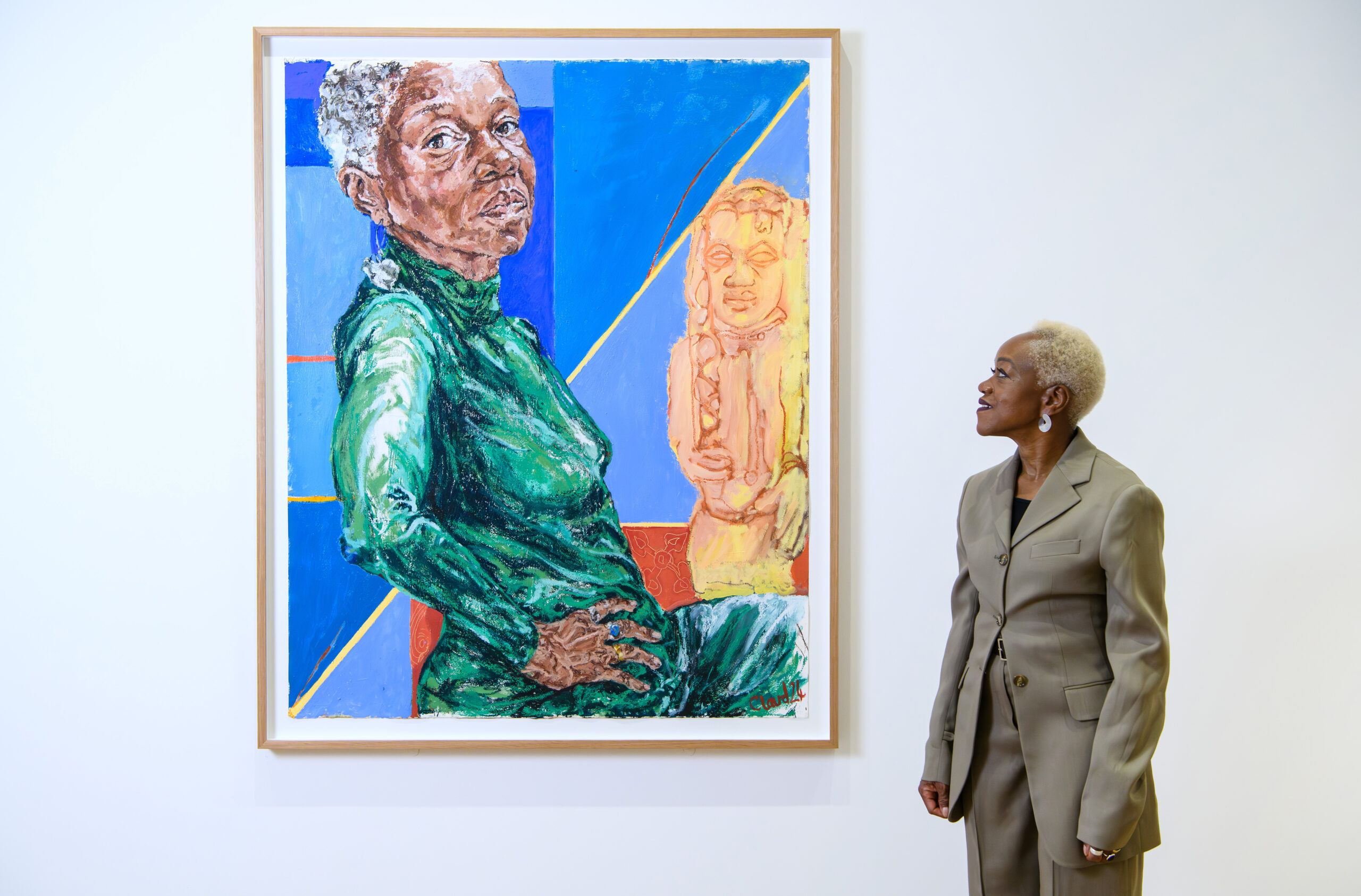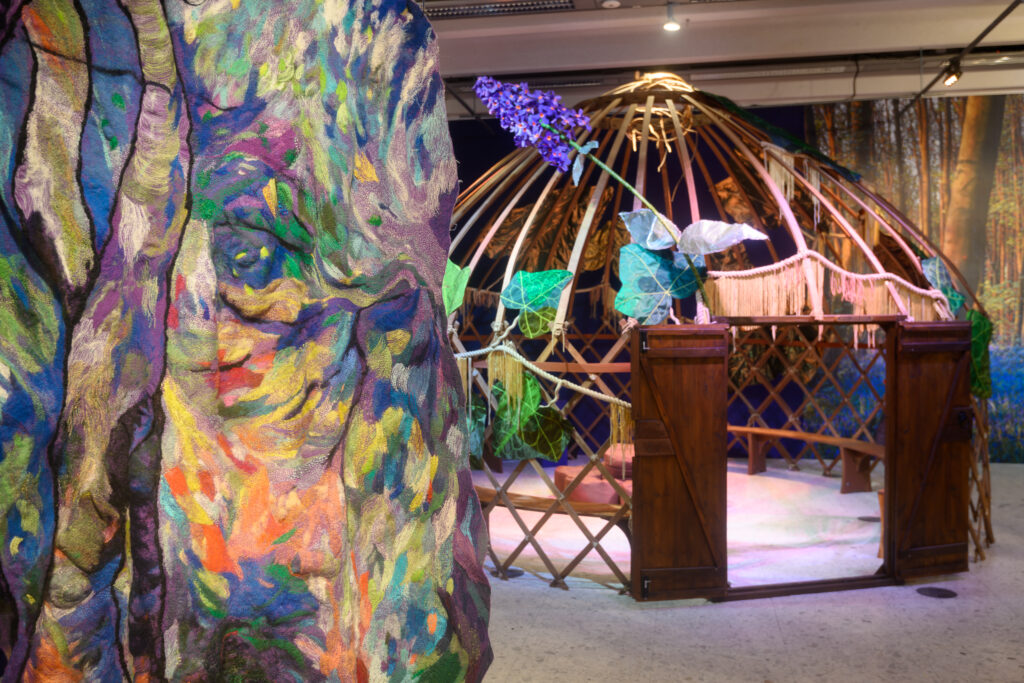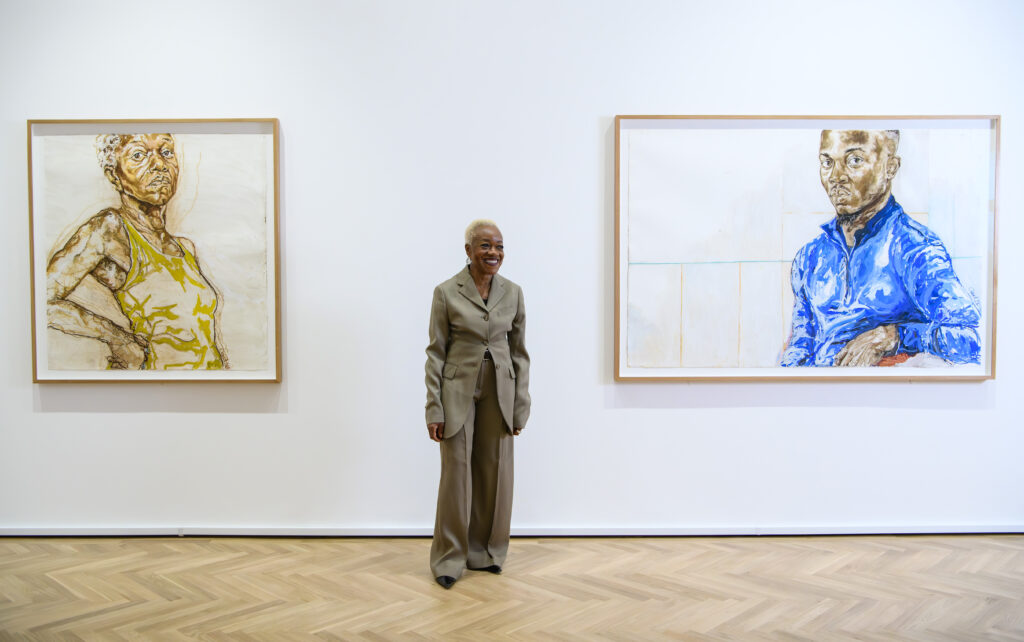
The Barber Institute of Fine Arts is back, after almost a year of closure for refurbishment work. With anticipation, I stepped through the Art Deco doors of this Birmingham gallery to discover an exciting trio of exhibitions, alongside a fresh rehang of the renowned permanent collection.
First, I was greeted by imposing Black figures, who seemed to watch me as I stepped into the modernised temporary exhibitions gallery where ‘Claudette Johnson: Darker Than Blue’ is the summer’s lead exhibition. In ‘Yellow Vest’, 2023, a woman stands, hand on hip, taking up so much space that she doesn’t quite fit within the conventions of the framed composition.
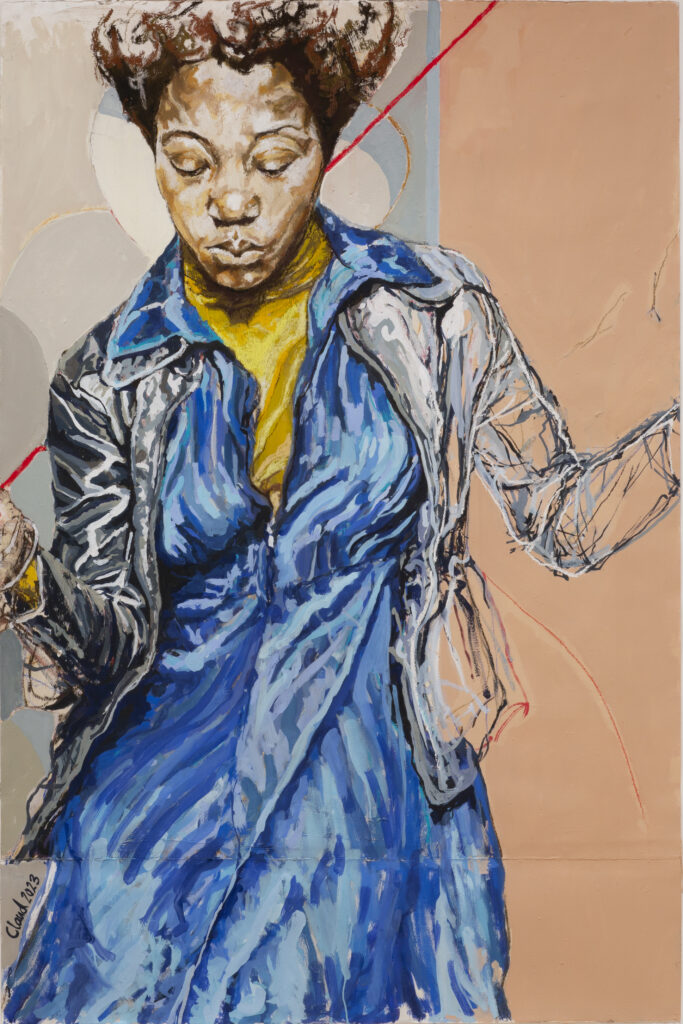
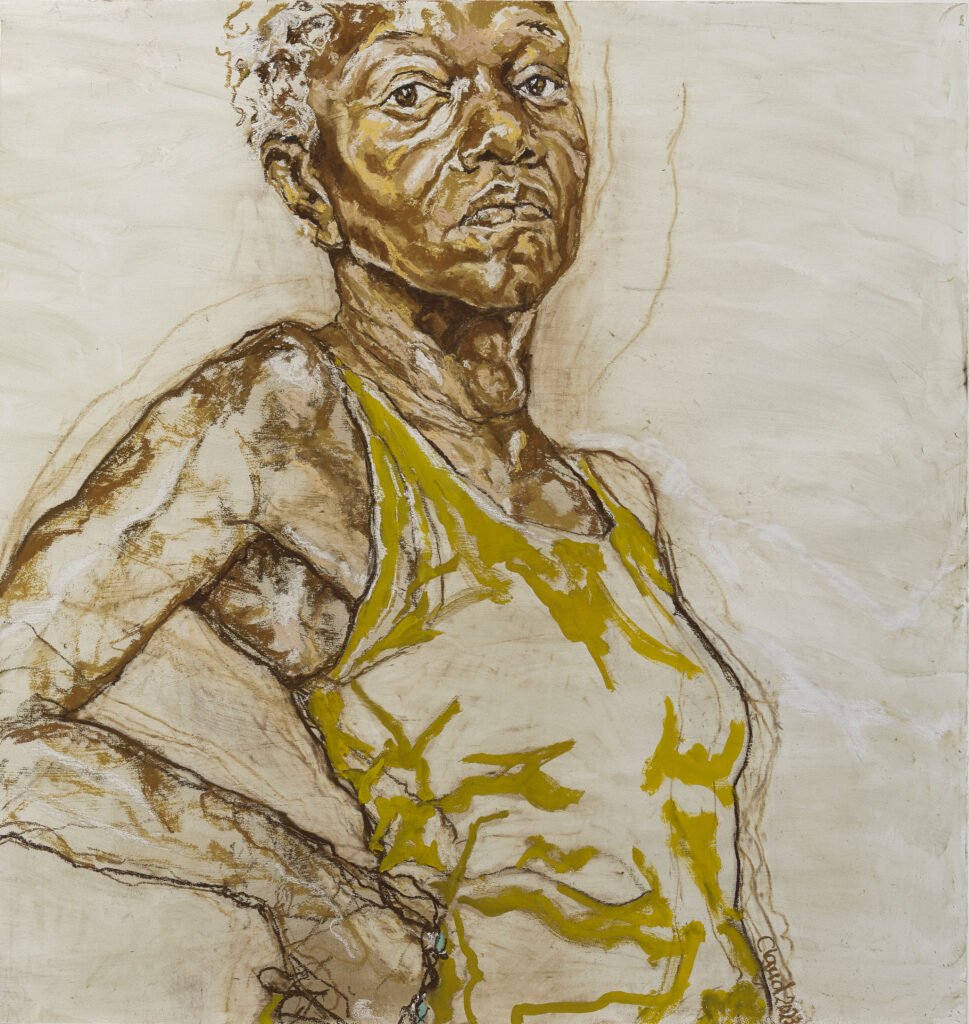
The drawn figure is characteristic of the artist’s style – Johnson is known for depicting large-scale Black bodies through a convergence of meandering, rhythmic lines layered with oil paint and pastels.
Such lines continue in ‘Blues Dance’, 2023, where a woman appears absorbed in music, energised by the expressive marks and rich palette of contrasting blues and yellows. Eyes cast downwards, she is caught in movement and a world of her own. This powerful piece was inspired by the Blue Beat Reggae dance scene of the 1980s, when Johnson was an art student in Wolverhampton, starting her career as part of the radical BLK Art Group.
Decades later, ‘Claudette Johnson: Darker Than Blue’ is her first solo return to the West Midlands, and it also marks the Barber’s first exhibition of a Black woman artist in the historic building.
“Absence and presence are themes in her work, reflected in the fact that the Barber has not previously exhibited a Black artist, and only one living woman artist. This was a marked absence which we’ve had to address and now we have made a start”, says Professor Jennifer Powell, who joined the Barber as Director in January last year.
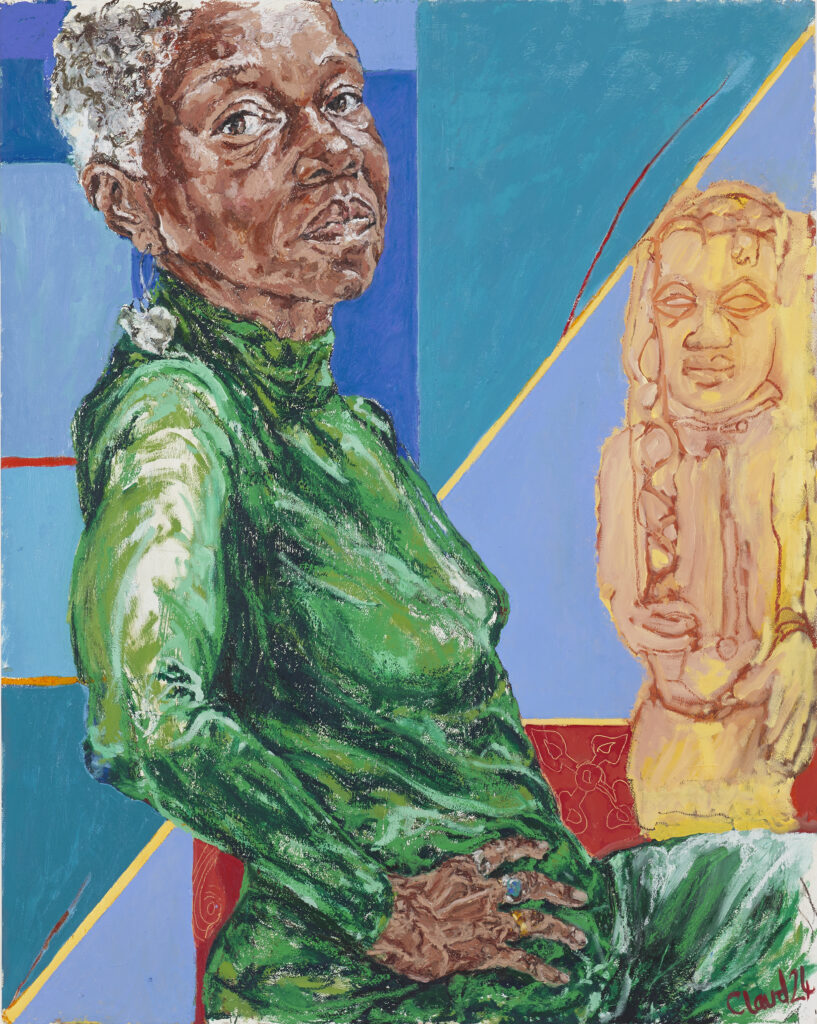
For this momentous occasion, she invited Johnson to create new work; the artist responded by engaging with the Barber’s own collections. In ‘Protection’, 2024, for which Johnson modelled, standing hand on hip, she seems to be asking viewers to join her in questioning the very role of museums.
With a long interest in how African cultures have been portrayed and collected by the West, she has included the image of a Benin Bronze which belongs to the Barber, and can be found in a cabinet on the landing outside. By engaging with such objects, Johnson invites new ways of looking at the Barber’s permanent collection.
For Powell, it was crucial that the Barber programme new work and “meet the needs of Birmingham, as a city, while working in relation to the University, where students are interested in contemporary practice”. She speaks from personal experience, having once studied at Birmingham herself.
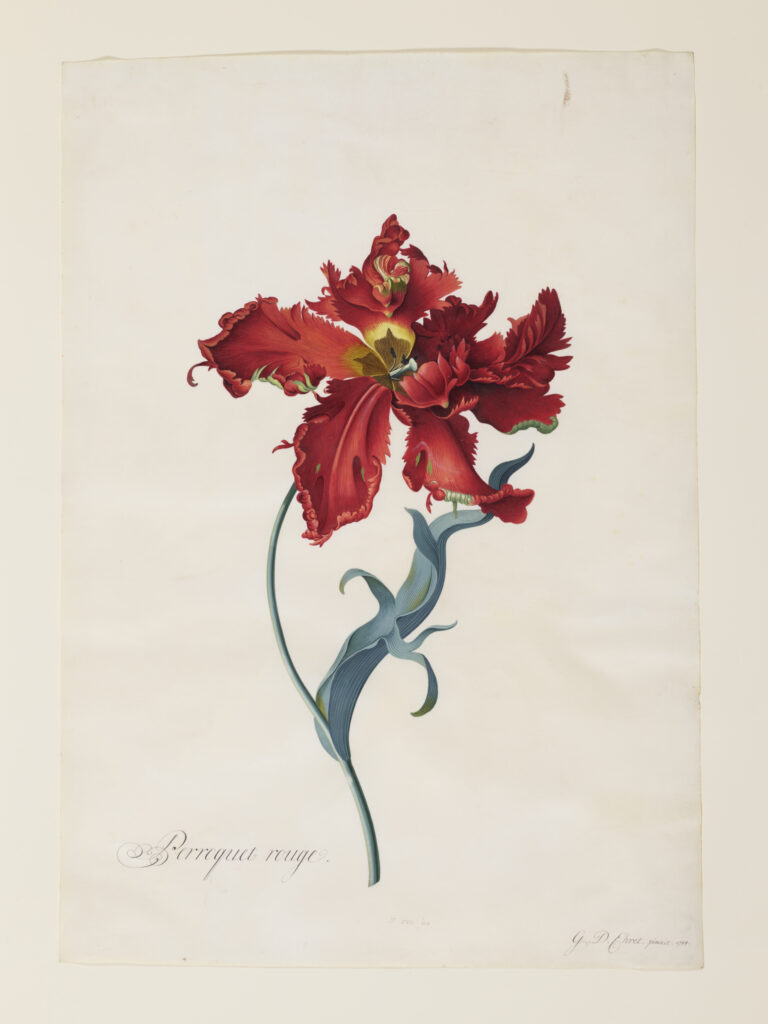
by George Doionysus Ehret.
Watercolour
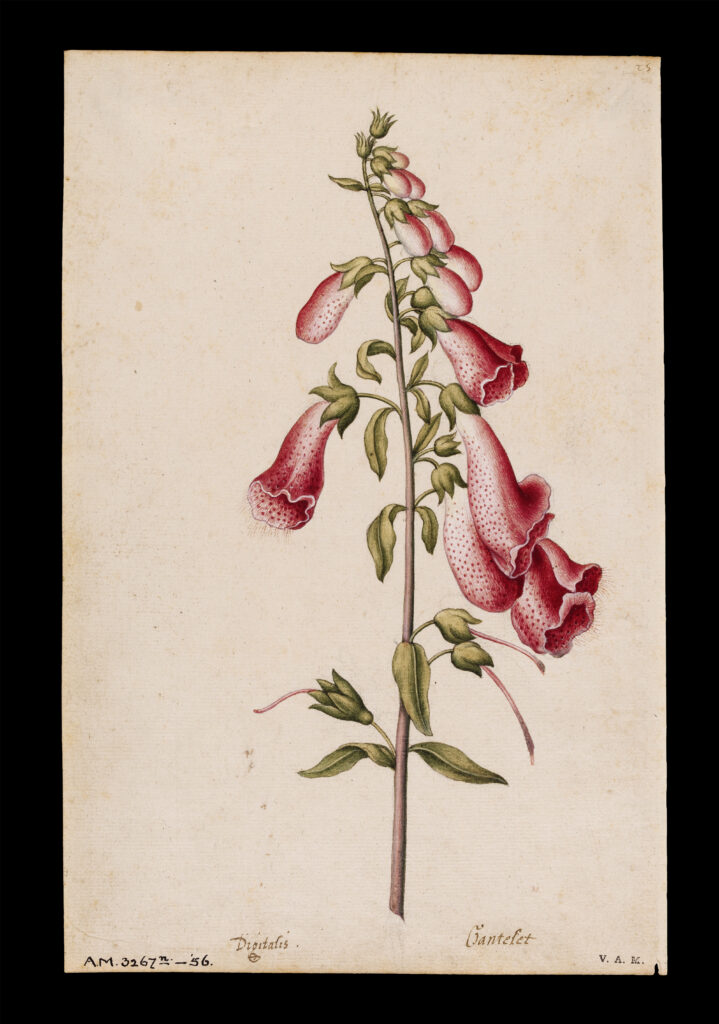
Jacques Le Moyne de Morgues. Watercolour
It is MA students who have curated another of the new exhibitions, ‘The Hidden Lives of Plants: Botanical Illustrations from the V&A’. This display, which can be found across two print rooms, showcases 25 detailed depictions of flowers, from the foxglove to the mighty sunflower.
However, the curators invite viewers to admire more than just their beauty, having researched the intrinsic qualities, history and journeys of these plants across borders. Sunflowers, I learn, have a fascinating ability to absorb radioactive isotopes and have thus been used clean up nuclear disaster sites!
I loved this quirky exhibition, which presents botanical illustrations as if they are portraits, behind which there are intriguing stories to be shared.
This emphasis on storytelling continues in the third exhibition, ‘Women in Power: Coins from the Barber Collection’, which explores historical women who have appeared on coins. From London to Beijing, and from representations of gender fluid deities from the 3rd century BC to Elizabeth II in 2022, the display focuses on the female rulers, potentates and icons whose histories have often been distorted or diminished over many millennia. Curated by Dr Maria Vrij, it points to the in-house expertise at the Barber, where the University’s art history department is also based.
It’s not only academics who are art experts. Before leaving, I can’t help but stop to look at the permanent collection, which has been re-hung in fresh, themed displays. In one room a friendly visitor assistant offers me some insights. He points to a striking large nude by George Bellows, explaining that it “once belonged to Andy Warhol, and is one of only two Bellows paintings in UK collections, as the US since brought in an export ban”.
He also points me towards a Magritte, a Monet and series of Dutch still lifes, before walking me over to an exquisite recent acquisition – ‘The Reader’ by Marguerite Gérard. “I’ll tell you about that one next time” he adds.
As the Barber is back open and free to visit, I look forward to many more days spent within its updated walls. I leave feeling that the gallery has been reinvigorated, and that, under Powell’s directorship, new narratives will enhance the already respected collection. As she says, “there is great potential for the Barber to grow” – I’m excited to see the direction that it takes.
